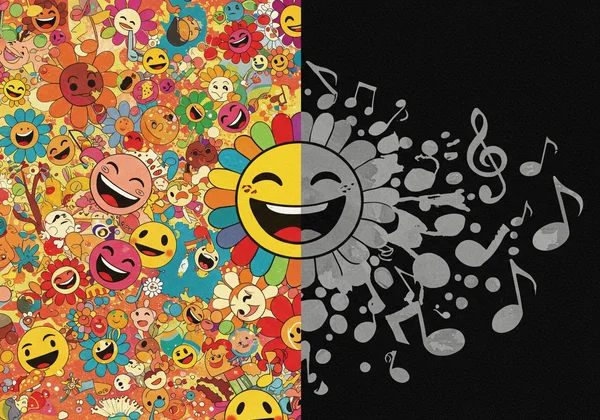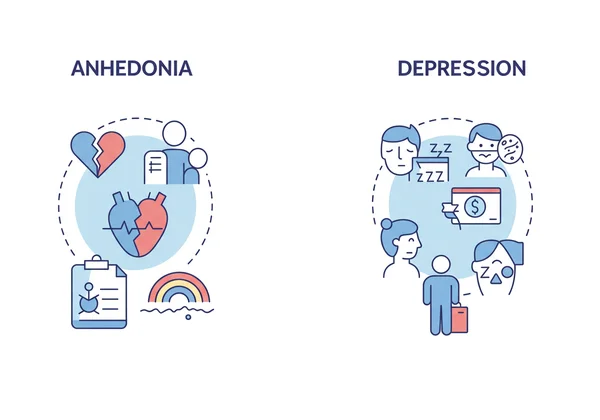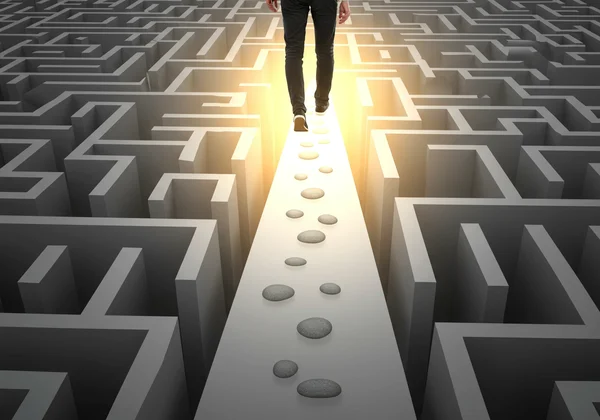Anhedonia Test for Depression: Understanding the Signs & Differences
Do you feel emotionally numb or find that things you once loved no longer bring you joy? It's common to wonder if this feeling is a sign of depression. While the two are closely linked, understanding the difference between anhedonia (the loss of pleasure) and the broader experience of anhedonia depression is a crucial first step toward clarity and healing. How do you test for anhedonia? This article will help you untangle these complex feelings and guide you toward the first step in understanding your emotional state.
This journey of self-discovery can begin with a simple, confidential step. If these feelings resonate with you, an online anhedonia test can offer valuable initial insights into what you're experiencing. It’s a way to put a name to the numbness and start a path toward rediscovering joy.
What are the Core Symptoms of Anhedonia?
At its heart, anhedonia is the inability to experience pleasure. It’s not just feeling down; it's a profound lack of joy and satisfaction from activities that you used to find enjoyable. This symptom can manifest in subtle or overwhelming ways, draining the color from your daily life. It’s a core component of what many people search for when they look up the "signs of anhedonia."

To better understand it, anhedonia is often broken down into two main types. Recognizing these can help you pinpoint exactly what feels "off" in your life. This clarity is the first step towards addressing the issue, and a specialized screening tool can help you see where you might fall on this spectrum.
Understanding Social Anhedonia: A Withdrawal from People
Have you ever felt like you're just going through the motions in social situations? Social anhedonia is characterized by a reduced interest in social contact and an inability to derive pleasure from interpersonal relationships. It’s more than just being introverted; introverts enjoy their alone time but can still find social interaction rewarding. Someone with social anhedonia, however, feels a distinct lack of reward from being with others.
This might look like:
- Avoiding calls or gatherings with close friends and family.
- Feeling detached or bored during conversations.
- Losing the desire to form new relationships or connections.
- Preferring isolation not for peace, but because interacting feels empty.
This withdrawal can be confusing and isolating, both for the individual and their loved ones. Understanding it as a specific symptom is key.
Understanding Physical Anhedonia: A Lack of Bodily Pleasures
Physical anhedonia involves an inability to experience pleasure from physical sensations. These are the tangible, sensory experiences that often bring us simple, profound joy. When physical anhedonia is present, these experiences fall flat, leaving a sense of emptiness.
Examples include:
- Your favorite meal tasting bland or unappealing.
- Music no longer stirring any emotion within you.
- The warmth of a hug or a beautiful sunset failing to bring comfort or awe.
- A decreased interest in physical intimacy.
This dimension of anhedonia can make the world feel like a gray, muted version of its former self. If these descriptions sound familiar, a free anhedonia test can provide a structured way to evaluate these feelings privately.
Is It Anhedonia or Just Emotional Numbness?
Many people use the term emotional numbness to describe what they are feeling, and it’s a very fitting description. So, what’s the difference? Think of emotional numbness as the broader category—a general sense of being disconnected from your feelings, both good and bad. Anhedonia is a specific type of emotional numbness that is laser-focused on the inability to feel pleasure or joy.
While someone experiencing general emotional numbness might feel muted across the board, a person with anhedonia specifically loses the "highs" of life. They may still feel frustration, sadness, or anxiety, but the capacity for positive feelings is significantly diminished. Distinguishing between the two is a critical step toward getting the right kind of support.
The Broader Picture: Key Depression Symptoms
While anhedonia is a significant symptom, depression is a much broader clinical diagnosis with a wider range of indicators. According to the Diagnostic and Statistical Manual of Mental Disorders (DSM-5), Major Depressive Disorder (MDD) is a mood disorder characterized by a persistent feeling of sadness or a loss of interest or pleasure, accompanied by several other depression symptoms.
Understanding this larger context is essential because anhedonia rarely travels alone. It is often a central pillar of a larger depressive episode. Looking at the full picture can help clarify whether you are dealing with a standalone symptom or a more comprehensive mood disorder.
Beyond Sadness: Mood, Energy, and Cognitive Signs
Depression is more than just feeling sad. It affects your mood, your body, and your thoughts in pervasive ways. The cognitive signs and physical exhaustion are just as important as the emotional ones.
Key symptoms of depression include:
- Persistent Low Mood: An overwhelming feeling of sadness, emptiness, or hopelessness that lasts most of the day, nearly every day.
- Fatigue or Loss of Energy: Feeling drained and exhausted even without significant physical exertion.
- Changes in Sleep: Insomnia (difficulty sleeping) or hypersomnia (sleeping too much).
- Changes in Appetite: Significant weight loss when not dieting, weight gain, or a noticeable decrease or increase in appetite.
- Feelings of Worthlessness or Guilt: Harsh self-criticism or feeling guilty over things that are not your fault.
- Difficulty Concentrating: Trouble focusing, remembering details, or making decisions.
- Thoughts of Death or Suicide: Recurrent thoughts about ending one's life. (If you are experiencing this, please seek immediate help from a crisis hotline or mental health professional.)
How Anhedonia Fits into a Depression Diagnosis
So, where does anhedonia fit in? Anhedonia, specifically the "loss of interest or pleasure," is one of the two primary symptoms required for a diagnosis of MDD. The other is a "persistent low mood." To be diagnosed with depression, a person must experience at least one of these two core symptoms, along with several others from the list above, for at least a two-week period.
This makes anhedonia a cornerstone of depression. However, it's not the entire building. A person can experience a deep low mood without significant anhedonia, or vice versa. Recognizing how central your loss of pleasure is to your overall state is vital, and an assessment like the SHAPS test is designed to do just that.
Anhedonia and Depression: The Overlap and Key Differences
Untangling anhedonia vs depression is key to understanding your mental health. The primary difference is one of scope. Anhedonia is a specific symptom—the loss of pleasure. Depression is a complex mood disorder, a syndrome that includes anhedonia as one of its most prominent features.
Think of it this way: not everyone with a cough has pneumonia, but pneumonia almost always involves a cough. Similarly, not everyone with anhedonia is clinically depressed, but clinical depression often involves anhedonia. Getting clarity on this can empower you to have more effective conversations with a healthcare provider.
Side-by-Side Comparison: Anhedonia vs. Depression

A clear, side-by-side view can make the distinctions easier to grasp. This is not a diagnostic tool but a way to organize your understanding of these experiences.
| Feature | Anhedonia | Depression (MDD) |
|---|---|---|
| Core Experience | The inability to feel pleasure or joy. | A persistent low mood AND/OR the inability to feel pleasure. |
| Scope | A specific symptom. | A broad clinical disorder with multiple emotional, physical, and cognitive symptoms. |
| Other Symptoms | May exist with minimal other symptoms. | Includes fatigue, sleep/appetite changes, guilt, and concentration issues. |
| Independence | Can exist on its own or as part of other conditions (e.g., PTSD, schizophrenia). | A defined syndrome where anhedonia is one of several required symptoms. |
Can You Have Anhedonia Without Being Depressed?
This is a critical question, and the answer is yes. You can absolutely have anhedonia without being clinically depressed. While anhedonia is a hallmark of depression, it can also be a symptom of other mental and physical health conditions, including schizophrenia, Parkinson's disease, post-traumatic stress disorder (PTSD), and substance use disorders. It can also be triggered by chronic stress or burnout.

Because anhedonia can have different causes, identifying it is a crucial first step. You don't have to guess or wonder in silence. Taking a confidential, evidence-based assessment can provide you with a clearer picture of your capacity for pleasure. If you're wondering, am I anhedonic?, the best place to start is with a tool designed to answer that specific question. You can start your assessment now.
Your First Step to Understanding Your Feelings

Distinguishing between anhedonia and depression is more than just an academic exercise—it's an act of self-empowerment. Knowing that your emotional numbness has a name, and that the loss of joy is a recognized symptom, can be incredibly validating. It confirms that you are not just "lazy" or "bored"; you are experiencing a legitimate challenge that deserves attention.
While this article offers information, true clarity comes from understanding your own unique experience. If these feelings of numbness or lost joy resonate with you, taking a targeted assessment is a confidential and empowering next step.
You are not alone in this feeling. Take our free anhedonia test today for instant, science-backed insights into your emotional well-being. It’s a safe, simple first step toward rediscovering your capacity for joy.
Frequently Asked Questions About Anhedonia
What is the root cause of anhedonia?
The causes of anhedonia are complex and not fully understood, but research points to disruptions in the brain's reward system, particularly involving the neurotransmitter dopamine. Dopamine is crucial for motivation, reward, and pleasure. Factors like genetics, chronic stress, inflammation, and underlying medical or psychological conditions like depression can all contribute to dysregulating this system, leading to the inability to feel pleasure.
Can people with anhedonia still cry or laugh?
Yes, absolutely. This is a common point of confusion. Anhedonia is about the loss of pleasure, not the loss of all emotional or physical responses. Someone with anhedonia might cry out of frustration, sadness, or stress. They might also laugh at a joke reflexively or as a social habit, but they won't feel the inner warmth or genuine mirth that typically accompanies it. The outward expression can remain, even when the internal feeling of joy is gone.
Does anhedonia ever go away on its own?
Sometimes, if the anhedonia is caused by a temporary factor like acute stress or burnout, it may lessen as the stressor is removed. However, when anhedonia is linked to an underlying condition like depression, it often requires active treatment for anhedonia to improve. This can include therapy (like Cognitive Behavioral Therapy), lifestyle changes, or medication prescribed by a doctor. The first step is always identifying the issue, which is why a self-assessment can be so helpful. To see where you stand, you can get instant insights here.